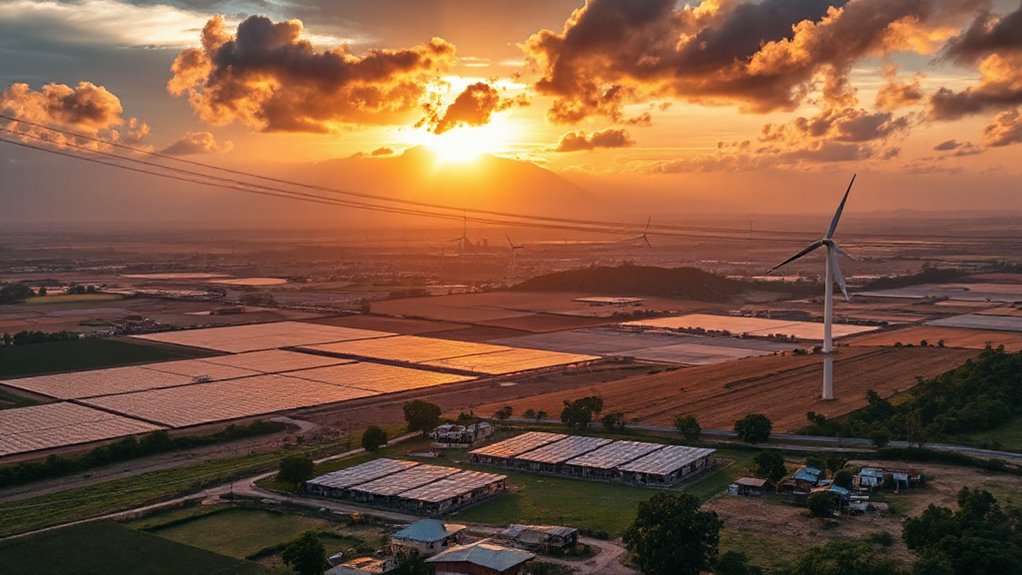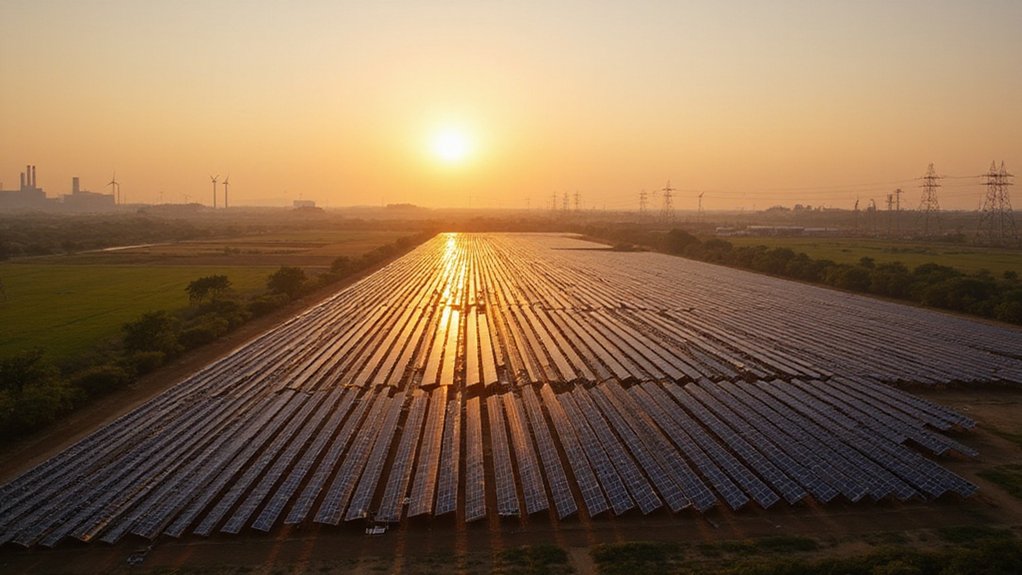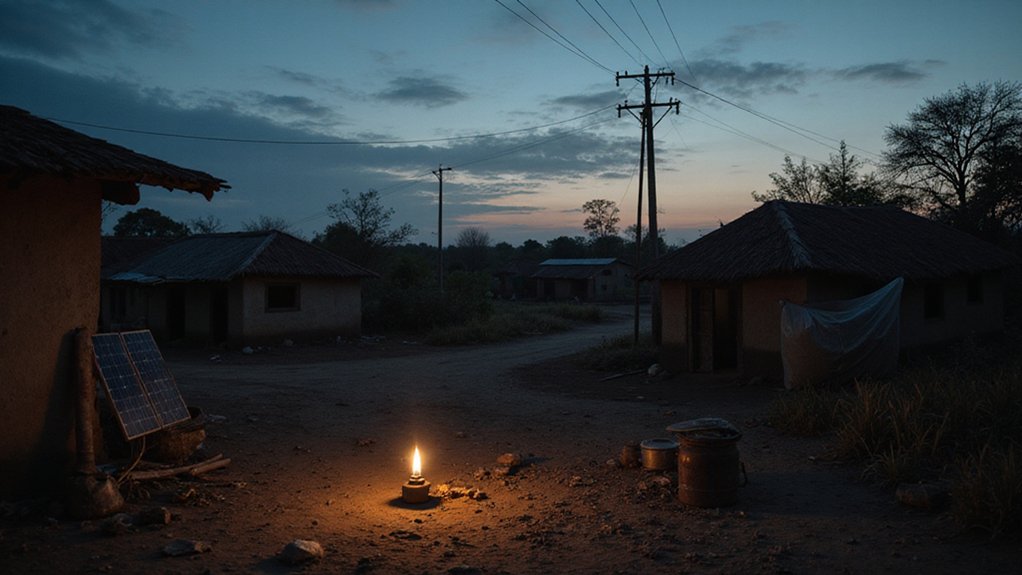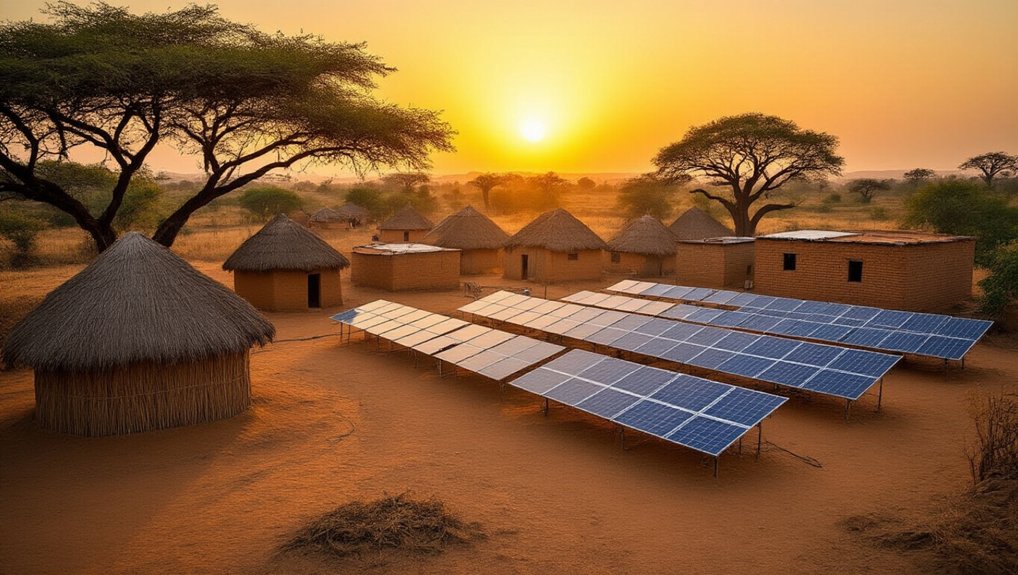India’s 2070 net-zero pledge is ambitious. Period. The “Panchamrit” plan aims for 500 GW of non-fossil energy by 2030—a massive shift for a coal-dependent economy. Trillions in investment needed? You bet. Developed nations industrialized without climate constraints, so India’s demanding financial support. Fair enough. Since 2014, renewable capacity has quadrupled, making India fourth globally in installed green power. Success could blueprint climate solutions for developing nations worldwide.

India’s 2070 Net-Zero Transformation: Can 500 GW of Green Power Save Our Planet?
While much of the developed world aims for carbon neutrality by mid-century, India has charted its own ambitious path with a pledge to achieve net-zero emissions by 2070. This isn’t just some vague promise. At COP26 in Glasgow, India revealed its “Panchamrit” action plan—catchy name, huh?—setting concrete milestones for 2030 that will serve as stepping stones toward its long-term goal.
The centerpiece? A massive 500 gigawatts of non-fossil electricity capacity by 2030. That’s no small feat for a country currently obsessed with coal. India also plans to source 50% of its energy from renewables and slash emissions by a billion tons within the same timeframe. Good luck with that.
Let’s be real. India’s emissions are projected to nearly double by 2040 if nothing changes. The country’s reliance on fossil fuels isn’t just an environmental issue—it’s economic. Coal powers growth, provides jobs, keeps the lights on. Phasing it out by 2060 (which is what experts say needs to happen) will hurt. A lot. This transition mirrors the global trend where coal’s share dropped from dominating electricity generation to becoming increasingly obsolete.
India can’t just kick its coal habit overnight. Economic reality bites harder than climate idealism.
The economic shift required is staggering. We’re talking trillions of dollars in investment. But India’s argument makes sense: developed nations industrialized without climate constraints, so why shouldn’t they help foot the bill? Climate justice isn’t just a buzzword here—it’s the foundation of India’s approach.
Progress won’t be easy to track, either. India hasn’t clarified if its net-zero target covers all greenhouse gases or just CO₂. Details matter. The country submitted its first Long-term Strategy for low-carbon development at COP27, but it lacks clear policy guidance on achieving net zero.
Still, if India pulls this off, the impact will be global. A successful green transformation in the world’s second-most populous country could create a blueprint for other developing economies. New markets. Green jobs. Innovation. India has managed to establish itself as fourth globally in installed renewable capacity, with a fourfold increase since 2014.
Will India’s 2070 transformation save our planet? Probably not alone. But without it, we’re definitely screwed. That’s just math.







